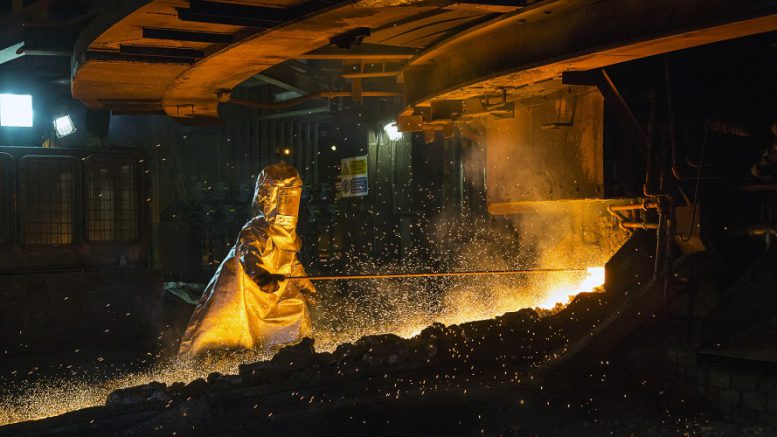Nickel price trends have become hard to predict. Ever since the London Metals Exchange (LME) crash, in March 2022, and the subsequent canceled trades, a number of banks pulled out and took with them the Exchange’s liquidity. Nickel prices on the LME have since become so volatile that suppliers no longer view them as representative of nickel’s market value. Today, most of the nickel being sold – particularly by the Chinese – is direct to producers and at prices based on nickel sulphate and therefore disconnected from the disgraced LME. It’s possible that the LME may eventually recover. It’s also possible that one of the few, recently launched competing contracts will take over. However, what really matters is what is happening with Class I nickel and ESG.
For investors new to the sector, here are a few basics and some recent history: nickel supply is split into Class I and Class II product. The latter makes up the bulk of supply in the form of nickel pig iron (NPI). It’s low quality but there’s plenty of supply and it’s well suited for consumption by the hungry beast known as the stainless steel industry. With China coming back online after various Covid-related shutdowns, the future of stainless demand is strong and expected to grow steadily.
Class I is the ultra-pure (minimum of 99.8%) nickel required by superalloy and battery producers. When it comes to potential supply issues, Class I is the only possible candidate. Case in point: of the 2.5 million tonnes of refined nickel produced in 2020, only about 600,000 tonnes or about 25%, was suitable for the production of battery precursors and cathodes. With analysts pointing to steep battery-driven demand growth curves, it seemed clear at the start of 2021 that the sector was headed for a severe shortage of battery-grade metal within a few years.
The likelihood of a shortage was considered even more likely because most of the world’s Class I supply comes from nickel sulphide ore. That’s a problem because the mining industry has done a pretty thorough job of finding and mining the world’s large, high-grade nickel sulphide deposits. In fact, the last discovery of major size and grade was Voisey’s Bay, N.L., in 1993.
Then, in March, 2021, Chinese nickel giant, Tsingshan, upended the market by announcing that it would start supplying nickel matte (containing approximately 65-75% nickel) to Huayou Cobalt and battery materials maker CNGR Advanced Material. In other words, turning Class II nickel – of which there is plenty – into a product that, with further refining, is viable as Class I nickel.
The announcement caught the market off guard and nickel prices took a major dive. While the process of turning NPI into nickel matte was well known, it was not considered viable because of the associated financial and environmental costs.
After retooling some of its facilities during 2021/22, Tsingshan made good on the promise to deliver matte, only to be told by its battery material customers that the product was not of sufficient quality and would require further refining. Nickel prices rose.
Fast forward to January 2023, and we have a Tsingshan announcement that it is in discussions with struggling copper smelters to refine the nickel matte into Class I nickel. If successful, the move, in conjunction with similar actions by the company’s peers, could double Chinese refined nickel production from 2022 levels. This will give China more time to complete the nickel refineries currently under construction.
Ticking time bomb
Is the Tsingshan plan likely to work? Yes, the process itself is viable but it will require significant capital expenditure by the copper smelters to be able to handle nickel matte versus copper feeds. What this means is that the tightening of Class I nickel supply is unlikely to be solved as fast as some market observers believe.
However, there is a bigger issue at stake.
Tsingshan’s strategy is based on the view that it is more important to ensure supply chain control than to reduce capex and to keep climate change at bay. Emissions and ecological damage are the potential ticking time bombs here.
You see, the nickel pig iron being used to create the matte is coming from Indonesia. The mines and smelters there are powered by coal and rely on ore supplied from strip mined areas allowing erosion to wash away vast tracts of land that are home to many unique species.
In essence, Tsingshan and its peers are doubling down on the bet that cheap supply matters more than clean supply, and that the West has no choice but to remain reliant upon China’s nickel for now and the foreseeable future. It’s a bet that has worked before – in 2007 when China flooded the market with cheap NPI.
Over the short to medium term, this approach has merit when viewed through a somewhat Machiavellian lens. Long term is a different story because it sets China’s nickel suppliers on a potential collision course with the juggernauts of ESG and geopolitics.
ESG has become something of a polarizing term over the last few years but regardless of your viewpoint, the world is continuing to transition to a low carbon future. While environmentally costly nickel may be tolerated for now, it won’t always be the case.
Quite aside from the potential for the public to boycott manufacturers that use “dirty nickel” – and the scramble for clean nickel that would ensue – we are starting to see carbon border taxes move from concept to reality. The European Union has a carbon border tax in the final stages of legislative approval. While not yet applicable to nickel, its raison d’être is to target industries that have a heavy carbon footprint.
Canada has also started on this path having recently completed a lengthy public consultation period. With a much-publicized critical metals strategy now in place, and host to major, undeveloped nickel sulphate deposits like Giga Metals’ Turnagain in B.C. or Waterton Global Resource’s Dumont in Quebec, which have much smaller environmental footprints, Canada has significant incentive to introduce a targeted carbon border tax.
Carbon border taxes are obviously a politically contentious issue but that brings us to geopolitics. Despite recent attempts at rapprochement, China and Western relations are not as constructive as they have been in previous years. The West is now keenly aware of how far behind it has fallen in securing strategic metals – the supply of which is crucial to the success of green energy and green technology initiatives.
Where does all this leave us?
Either the world accepts that clean technology will be hooked on large quantities of “dirty nickel” and reliant on Chinese supply of said nickel, or the existing, undeveloped projects with superior environmental footprints, but smaller returns on investment, get financed. Of course, Western investors don’t like marginal economics, and China is reluctant to finance them because said projects are sitting in North America. And so we continue moving towards an inevitable crunch time when decisions will have to be made.
In the meantime, whatever route is taken, we are still going to see an extended period of Class I nickel shortage until China’s nickel giants finish rolling out their Class II to Class I refining processes.
Anthony Milewski is the co-founder of The Oregon Group research house and the chairman of Nickel 28 Capital Corp. (TSXV: NKL). The company has an 8.6% joint-venture interest in the Ramu nickel-cobalt operation in Papua New Guinea. In addition, it has a portfolio of 13 nickel and cobalt royalties on projects in Canada, Australia, and Papua New Guinea.





Be the first to comment on "Clean nickel or cheap nickel? You can’t have both"